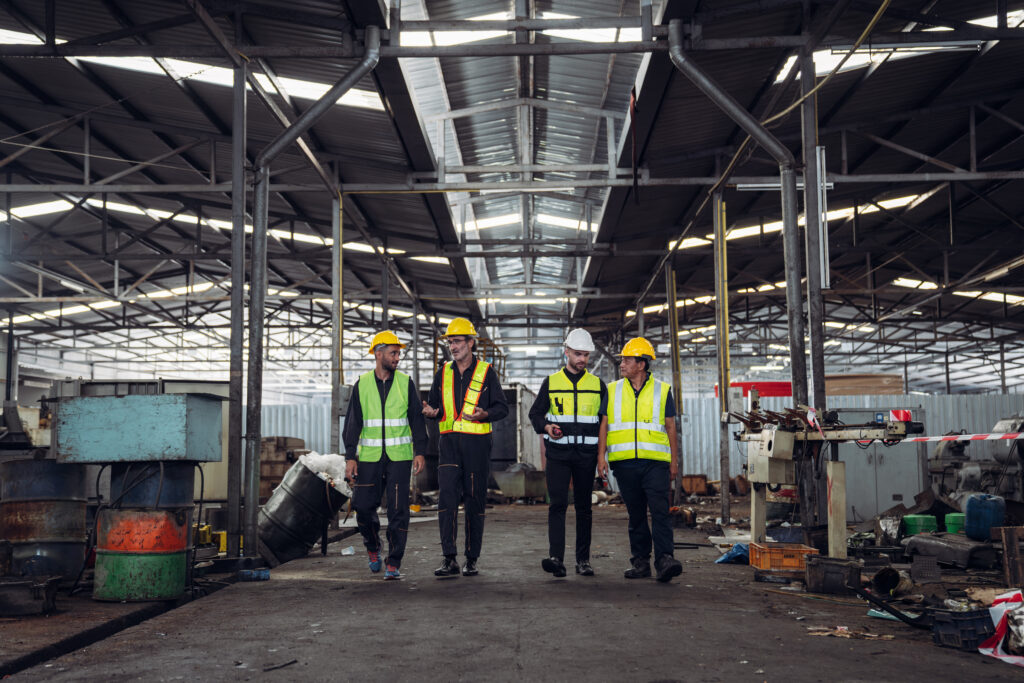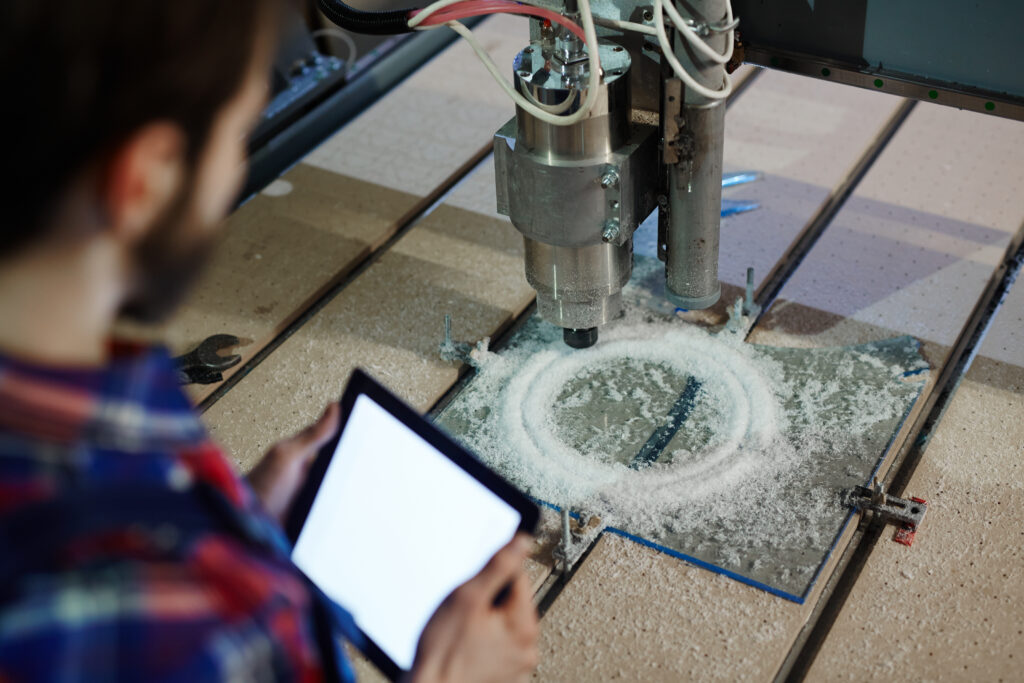Secure & Collaborative Workflow Automation emerges as a transformative force, reshaping how sectors such as oil and gas and industrial manufacturing manage their intricate processes. This article explores the key components,
benefits, implementation strategies, implementation examples, challenges, and future trends of this groundbreaking technology, with a particular focus on the unique needs of oil and gas and industrial manufacturing.
Key Components of Secure Collaborative Workflow Automation

An effective workflow automation system should consist of these components:
Security Features
Security is a top priority in industries where sensitive data can have far-reaching consequences.
Secure & Collaborative Workflow Automation introduces robust encryption and access controls, ensuring that critical information remains confidential. In oil and gas and industrial manufacturing, where proprietary data is a cornerstone of competitiveness, these security features are indispensable.
Collaboration Tools
Real-time collaboration tools play a pivotal role in enhancing teamwork and project evolution. In the oil and gas and industrial manufacturing sectors, where projects are often large-scale, collaborative tools like FAT FINGER bridge gaps, fostering transparent communication. This not only improves efficiency but is crucial for ensuring the seamless coordination required in complex operations.
Benefits of Secure & Collaborative Workflow Automation
Adopting Secure & Collaborative Workflow Automation is a strategic imperative with profound advantages in operational processes, innovation and adaptability.
Increased Efficiency
Automation, in these highly regulated industries, alleviates manual bottlenecks, allowing skilled professionals to focus on strategic tasks. This translates to heightened productivity and streamlined processes. This benefit is especially significant in oil and gas and industrial manufacturing, where operational efficiency directly impacts profitability.
Enhanced Communication
Real-time collaboration tools become a lifeline in projects involving multiple stakeholders and distributed teams. The seamless communication facilitated by these tools is crucial in industries where project updates and status tracking are integral to success. In oil and gas, where projects often span diverse geographic locations, effective communication tools are a game-changer.
Error Reduction
Automation minimizes the risk of human error, ensuring precision in tasks critical to these industries. In environments where mistakes can lead to catastrophic consequences, such as in industrial manufacturing quality control or oil and gas equipment calibration, error reduction is not just a benefit; it’s a necessity.

Examples in Oil and Gas and Industrial Manufacturing
Example 1: Transforming Oil Rig Operations
An oil and gas company’s journey to streamline offshore drilling operations using Secure & Collaborative Workflow Automation serves as a compelling example. The implementation includes real-time monitoring, predictive maintenance, and collaborative tools that significantly improved operational efficiency.
Example 2: Smart Manufacturing in Industrial Settings
Automating workflows in a manufacturing plant optimizes production processes, reduces downtime, and enhances product quality. Collaborative tools also foster a culture of teamwork and innovation, improves efficiency and competitiveness in industrial manufacturing.
How to Implement Collaborative Workflow Automation

Choosing the Right Automation Tools
The complexity of operations in these sectors demands careful consideration when selecting automation tools. Tailoring solutions to industry-specific needs is crucial. In this context, FAT FINGER, an innovative automation tool, offers a comprehensive solution for the unique challenges of oil and gas and industrial manufacturing.
Employee Training Programs
Implementing Secure & Collaborative Workflow Automation necessitates comprehensive training programs. In these industries, where the workforce operates in high-risk environments, ensuring that employees are adept at using new tools is crucial. Training programs need to encompass the technical aspects and also safety protocols.
Integration with Existing Systems
Harmonizing automation with existing systems is a critical step to prevent disruptions in ongoing operations. In oil and gas and industrial manufacturing, where legacy systems often coexist with cutting-edge technology, seamless integration is key. This ensures that automation complements rather than hinders existing workflows.
3 Steps to Implement Workflow Automation in Oil and Gas and Industrial Manufacturing
Step 1 – Assess Your Workflow
Understanding the intricacies of current workflows in these industries helps identify areas where automation can make the most significant impact. This involves evaluating processes such as drilling operations, equipment maintenance, and supply chain management. A thorough assessment sets the stage for targeted and effective automation implementation.
Step 2 – Identify Automation Opportunities
Pinpointing tasks prone to human error or time-consuming processes is crucial. In the context of oil and gas, this might include automating data analysis for reservoir management, while in industrial manufacturing, it could involve automating quality control processes. Identifying automation opportunities requires a nuanced understanding of industry-specific challenges and inefficiencies.
Step 3 – Building a Roadmap
Developing a strategic plan ensures a phased and successful implementation of workflow automation. This roadmap should be tailored to the unique challenges and opportunities presented by the oil and gas and industrial manufacturing sectors. Considering the scale and complexity of operations, a well-crafted roadmap becomes a guiding framework for a smooth transition to automated workflows.

Tips for Seamless Adoption of Workflow Automation
1 – Implement gradually
Implementing automation gradually in these industries helps employees adapt, reducing the chances of disruption. The article provides insights into how companies can phase in automation without compromising safety or productivity. Gradual implementation allows for iterative improvements and ensures that the workforce embraces automation as an enabler rather than a disruptive force.
2 – Focus on Continuous Improvement
Given the rapidly evolving nature of these industries, regularly reassessing and refining automation processes ensures they align with changing business needs. This involves staying abreast of technological advancements and industry-specific developments. Continuous improvement strategies are integral to ensuring that automation remains aligned with the dynamic requirements of oil and gas and industrial manufacturing.
Collaborative Workflow Automation With FAT FINGER

Automate workflows at your company with FAT FINGER and experience the following:
- Ensure equipment operates optimally
- Reduce costs
- Enhance safety
- Minimize the potential for environmental disasters
- Enhance process efficiency
- Ensure Quality Control
Why Use FAT FINGER
FAT FINGER has the following benefits:
Easy-to-use interface: Anyone in your company can use it.
Data-Driven Insights: Comprehensive reports and visualization improve decision making.
Integrated Workflows: This ensures a cohesive approach to safety and operational excellence.
Real-Time Collaboration: Your team can communicate instantly through FAT FINGER, leading to faster response times and better collaboration.


